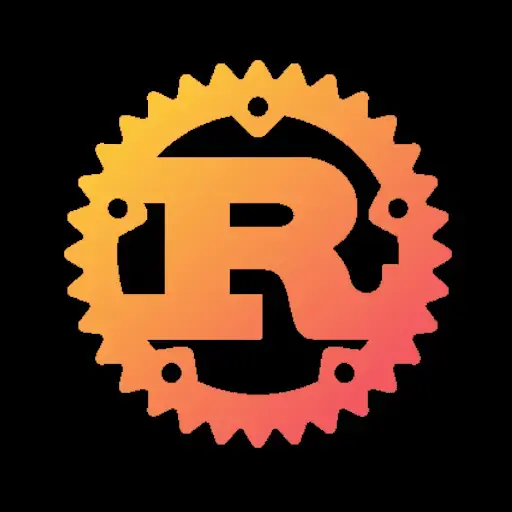I learned to hate the Mac forced upon me for the time I used it, thank you very much. Fuck everything about those boots from the fruit store. Especially in a multi-architecture team, fuck macs.
- 70 Posts
- 285 Comments
That explains it, yeah. Companies of that size often aren’t open for change unless it is top down.
Good luck with the fur trapping. Not sure if there’ll be less bugs though ;)
I was told the same at multiple jobs and just asked kindly that they spend the money on a linux compatible laptop. I had arguments to back my statement up too. It worked out.
YMMV
Good luck (if you want to go down this path and haven’t become a farmer yet).
Rght? "I want something shiny to write my code on because it makes me look cool and costs a lot " is not ether sign of seniority.

 1·4 days ago
1·4 days agoSignal, unfortunately, doesn’t have good group support. Herr are only 2 privilege levels: admin and user. It seems like it will take a long time before signal upgrades group chats.

 2·5 days ago
2·5 days agoHow is that going to fund opensource?

 3·6 days ago
3·6 days agoIt could be part of the solution. We know we can’t go on just like we did. It’s not sustainable and change should be affected inside the opensource system as well as outside.

 17·6 days ago
17·6 days agoI hope the Post Open license will be a part of the solution for this. Free commercial use of opensource should be disallowed.

 114·8 days ago
114·8 days agoWhy do you think it’s AI?
Tainted and unsigned module it says. Have you tried undoing some of your modifications? They might be the root of your problem.

 2·13 days ago
2·13 days agoYeah, the second he started talking about computer architecture, I thought “he’s going to align the data and keep it close to each in memory for better caching and faster access, isn’t he?”.
At the moment, it looks like an interesting way to optimise an existing program. I’m not sure if thinking about it right from the beginning will speed up programming as, IMO, first something functional has to be written with somewhat good architecture, then the architecture improved to make sense and more features added, and once a v1 exists that’s satisfactory, then optimisation starts.
Maybe I’m wrong though and this is something that can be considered from the getgo, but it feels more like a latestage kind of thing. Some if it can definitely be taken care of by the compiler and the developer made aware of with warnings.

 3·14 days ago
3·14 days agoThis was much more pleasurable than the Lunduke - DHH interview. Boy, is this one relaxing.
I’ve met Arch users who will confidently tell me untruths about Linux in general and have no idea how to even approach solving problems beyond copypasting instructions from the Arch wiki or forums.
“What happened?” I dunno
“What did you do?” I just ran “echo…” (Or some other meaningless command)
“Do you have logs?” No, what are those?
“Please at least tell me the versions of the things you are running” How do I get that information?
I guess it speaks to the stability of Arch that it can attract users who have no idea what they are doing and still work. But it does also speak volumes about the image it has as an elite distro that makes you look like a Linux expert without actually being one.

 1·19 days ago
1·19 days agoThere will always be stuff to code. Even if the task of coding itself were completely removed, being able to use AI for coding will require knowledge of the subject matter and an ability to express one’s needs.
If you go onto any bug list, most people are unable to express the most basic information to dill in a bug report form. “What are you using”, “What did you do”, “What did you expect to happen”, “What happened instead”. Just that. It doesn’t require any technical knowledge, just the rudimentary ability to describe events and desires and yet they still fail.
AI assisted coding requires the ability to understand ambiguity too. “Solve world hunger” can be solved by killing all of humanity so that nobody is hungry anymore, putting porridge in front of evey human being until the end of time, hooking up every human to a feeding tube and harnessing energy from it, modifying human genes to not know what hunger is, or rebuilding society to give everybody equal access to nutrition that they enjoy.
Ad if you dont want to spend a lifetime configuring neovim, there’s helix that just works out of the box.

 1·29 days ago
1·29 days agoOP seems to be talking about high level institutions collaborating with the opensource community to make linux phones a reality. Those aren’t “normal people” but politicians and their ilk. They should be thinking different than the average consoomer i.e not “oh it’s shiny and popular, fuck the price”.
You won’t get laid more, that’s for sure!

 30·29 days ago
30·29 days agoI tried using AI in my rust project and gave up on letting it write code. It does quite alright in python, but rust is still too niche for it. Imagine trying to write zig or Haskell, it would make a terrible mess of it.
Security is an afterthought in 99.99% of code. AI barely has anything to learn from.
Drama?






Sure, if you compare it to a thinkpad for 1k. M1 Macbook pros cost how much when they were released? 2.5k? 3k? Of you’re going to get reduced compilation times. But what exactly is it “paying of”? How is the calculation from time to money done?
“I can store so much stuff in my RAM, it’ll pay back in 6 months”. Such a random metric.